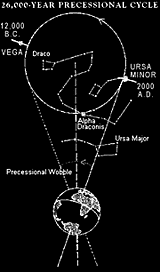|
|


Editorial
|
Fragments
|
Aztalan
|
Carpet Rocks
|
Sphinx I
Register
for our Hall of Records Newsletter!
Questions? Comments? Suggestions? Advertising? Press Releases?
Contact us!


The "Perry Mastodon" found near the East Branch of the DuPage River, just northeast
of Lake Ellyn in Glen Ellyn, Illinois, a western suburb of Chicago.
|
|
The "Perry Mastodon" is a full-sized, adult mastodon skeleton unearthed
in 1963 near Glen Ellyn, Illinois. It was discovered by a man named Marshal
Erb, who was excavating a pond in the backyard of U.S. Federal District Court
Judge Joseph Sam Perry. Dredging the pond, he came across a huge bone.
Realizing that what he had found was exceptional, he took it over to Wheaton
College, where it was examined by Geology Department Chairman Dr. Donald
Boardman. He judged it to be the fossilized bone of a proboscidean,
a species of ancient elephant!
Upon further excavation, more bones were found, and Judge Perry gave the
Wheaton College Geology department permission to excavate the find. It
was then taken over to the Rush Studio in Chicago, where the mastodon
skeleton was reassembled. Those bones that were missing were replaced by
fiberglass replicas made from similar mastodon skeletons.
At Wheaton College, a new building, named Armerding Hall, was built to
house the new mastodon exhibit, which was completed in 1971. The mastodon
skeleton was completed and housed in a diorama setting in 1974, and it can
be seen to this day. It is mounted on a rotating pedestal, which allows
visitors to see both sides: the left side of the mastodon, where just the
bones have been reassembled, and the right side, which has been given
a fiberglass "skin" to give the viewer a realistic view of how the mastodon
actually looked.
Click
here
to see a complete slide show, hosted by Wheaton College.



|

|
|

 The "Precessional Cycle" is caused by the drag imposed upon Earth's rotation by the
gravitational pull of the Sun, Moon, and planets. It is manifest in a slow changing of
the Pole Star over a period of approximately 26,000 years. It also results in the slow
movement of the constellations relative to the Vernal Equinox (explained below).
The "Precessional Cycle" is caused by the drag imposed upon Earth's rotation by the
gravitational pull of the Sun, Moon, and planets. It is manifest in a slow changing of
the Pole Star over a period of approximately 26,000 years. It also results in the slow
movement of the constellations relative to the Vernal Equinox (explained below).
|
|
"Precession" is an astronomical term that refers to the slight "wobble" in Earth's
rotation brought on by the gravitational pull of the Sun, Moon, and planets. This
small but significant pull causes the stars to change their apparent positions
relative to Earth by 1 degree every seventy-two years, rotating completely once
every 26,000 years.
As a result of this gradual rotation of the night sky, the constellations appear
to move over one "house", every 2,100 years. This change is measured relative to
what is called the "Vernal Equinox", or the first day of spring, when days and nights
are of equal length. As the night sky turns into dawn on the Vernal Equinox, the last
constellation to be seen in the eastern sky before the sun rises determines what "age"
we are in.
Since around 0 a.d. we have been in the "Age of Pisces", where Pisces has
been the last constellation seen in the east before dawn on the Vernal Equinox.
However, over the past 2,000 years the position of the Vernal Equinox has gradually
changed, due to precession, the constellation of Aquarius will soon mark the dawn of
the first day of spring, and we will have entered the "Age of Aquarius".



|
|

|
Editorial
|
Fragments
|
Aztalan
|
Carpet Rocks
|
Sphinx I
Register
for our Hall of Records Newsletter!
Questions? Comments? Suggestions? Advertising? Press Releases?
Contact us!
|
|
